SO: Another good tracer for isotope ratio 32S/34S in molecular clouds
-, -, -, -, -
(Center for Astrophysics, Guangzhou University, Guangzhou 510006, China)
Abstract: To date, the used tracer for the isotope ratio 32S/34S in the interstellar medium (ISM) was just CS and its rare isotope, which may bring systematic errors. Thus, other tracers for determining accurate 32S/34S values are needed and important. We performed IRAM 30 m observations on 32SO and 34SO toward a sample of molecular clouds with accurate distance value, which was obtained from the trigonometric measurements with high angular resolution. Our observations got detections for 6 sources in both 32SO and 34SO lines. The isotope ratio 32S/34S of them is determined from their 32SO and 34SO line intensities. And the kinematic temperature is also derived for them. It shows that our results from 32SO are consistent with the results from CS data including the optical depth correction. This reflects that 32SO should be better good tracer for measuring isotope ratio 32S/34S in ISM, without needing the opacity corrections as CS. Future observations on 32SO and 34SO toward large samples of molecular clouds are important to obtain accurate isotope abundance ratio 32S/34S, and further check the Galactic ISM radial gradient of 32S/34S.
Key words: ISM; SO; isotope; abundance ratio; gradient
0 Introduction
The chemical evolution of galaxies depends on stellar nucleosynthesis (converting the hydrogen into heavier elements) and subsequent ejecta to the interstellar medium (ISM). Radial metallicity gradients in galactic disk are found by many measurements of different tracers, including stars[1], H II regions[2]and planetary nebulas[3], etc., which matches the inside-out formation scenario of our galaxy. Isotope abundance ratios in the ISM are believed to be good tracers for nucleosynthesis and ejecta by different stars and chemical evolution of the Milky way, which can be effectively measured from observations of molecular clouds, thorough corresponding molecular lines of isotopologues[4]. Isotope ratios related to the main metal elements, such as12C/13C,14N/15N,18O/17O, and32S/34S, are normally measured for its relative large abundance. Unlike C, N, or O related to the carbon-nitrogen-oxygen (CNO) cycle, S is believed to be a powerful tool for providing information in the late stage evolution period of massive stars[4].
To date, there are two systematic works on measuring the sulfur isotope ratio32S/34S in ISM, Chin, et al.[5]for sources in the southern sky and Yu, et al.[6]for the northern sources. Both works used sulfur-bearing molecular CS and its isotope C34S to measure the isotope ratio32S/34S. Other different tracers are needed to determine accurate isotope ratio since single tracer for measuring the ratio may bring systematic errors. Thus we performed observations on another tracer32SO/34SO for the isotope ratio32S/34S through IRAM 30 telescope, toward a small sample of molecular clouds with different galactocentric distance. Comparisons of the isotope abundance ratio from two different tracers provide essential clues for the reliability of the resulting ratios.
1 Observations
Our observations of32SO and34SO J=3-2 were carried out using the Institut de Radio Astronomie Millimétrique (IRAM) 30 m single dish telescope (Granada, Spain) in Jan., 2016. The Eight Mixer Receiver (EMIR) with dual-polarization was employed, and the fast Fourier transform spectrometer (FTS) backend in the wideband mode was used for data recording, providing frequency coverage of 95~115 GHz, with a spectral resolution of 195 kHz (~0.6 km s-1around 100 GHz)[6-7]. Both32SO and34SO lines were observed simultaneously, with the center frequency of 97.715 401 and 99.299 87 GHz, which corresponds to a beam size of ~26″.

2 Results & discussion
2.1 Spectral fitting results
We used the Continuum and Line Analysis Single-dish Software (CLASS) of the Grenoble Image and Line Data Analysis Software packages (GILDAS)[8]to reduce our spectra data. After subtracting baselines and applying Hanning smoothing, the line parameters are obtained from Gaussian fits for those detected lines (Signal to noise >5), with a spectral resolution of ~0.6 km s-1. For the source G049.49, two Gaussian lines for both its32SO and34SO are used to fit its two components with different velocity. A total of 6 sources were both detected in32SO and34SO J=3-2 lines (Fig.1). The spectral line parameters of these 6 sources are listed in Table 1.
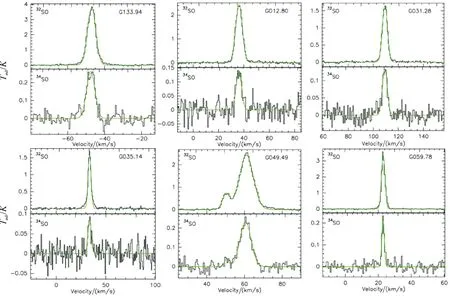
Fig.1 Spectra of 6 sources with both detected in 32SO and 34SO J=3-2 lines, after subtracting baselines and applying Hanning smoothing leading to 0.6 km s-1-wide channels
2.2 Measured abundance ratios and possible effects
As shown in Sect. 2.1, we obtain the spectral line parameters of these 6 sources, listing in Table 1. From the integrated line intensity of32SO and34SO, we can derive the isotope abundance ratio of32S/34S for our 6 sources. These sources were also measured in previous works, which provided32S/34S abundance ratios from CS[6]. Comparisons show that our measured ratios are consistent well with the opacity-corrected ratios from CS within the uncertainties (see details in Table 1). Some possible effects on our measurements are discussed as follows.
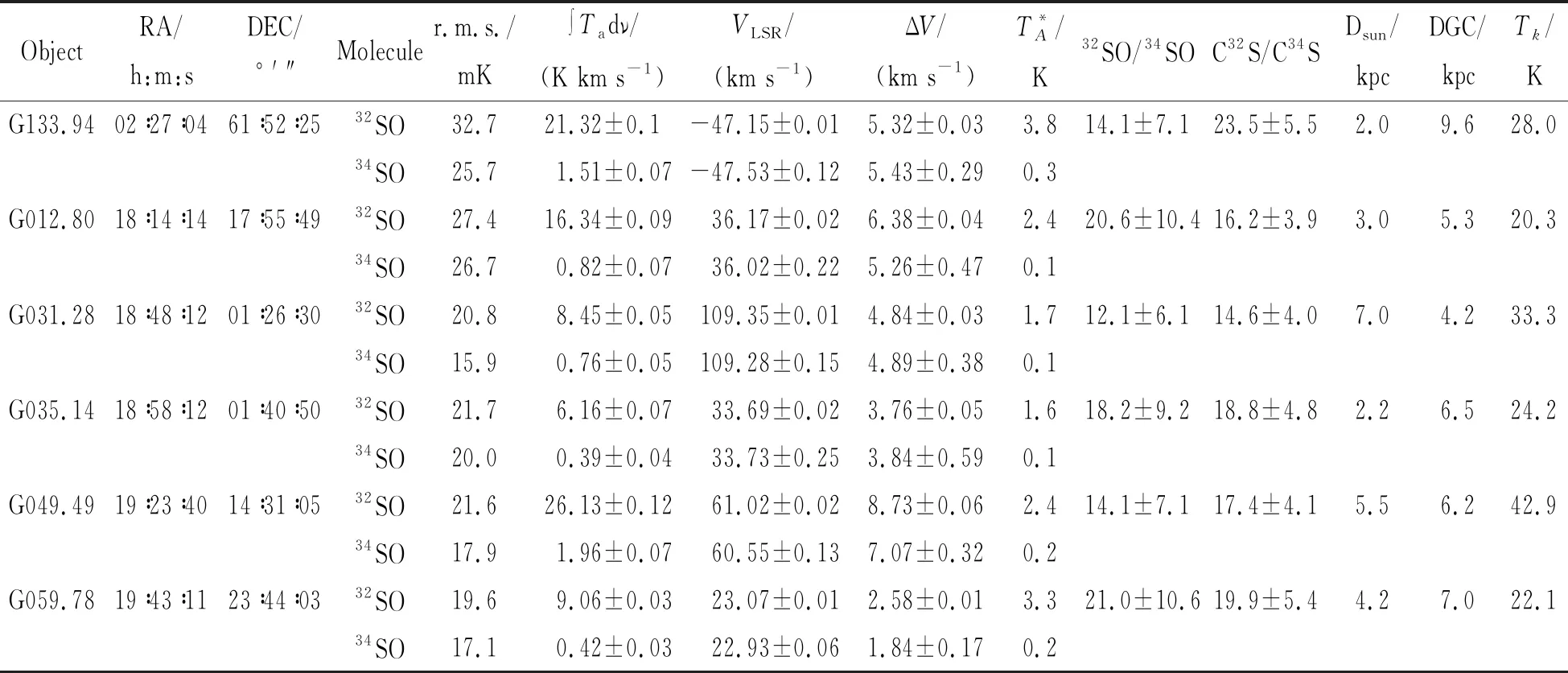
Note: The green lines present Gaussian fitting for those detected lines
2.2.1 Observational effects
Sources at different distance contain different linear beam sizes covered by telescope. More relatively diffuse low-density gas of different kinetic temperature may be included in a larger covered linear size of sources at larger distances, which could affect the isotope ratio results. In order to evaluate the possible observation effects on our abundance ratios, we plot the abundance ratio of32SO/34SO against the heliocentric distance in Fig.2. The ratio results from CS measurements are shown as grey diamond symbols. No significant correlation is found between the isotope ratio and the heliocentric distance, which should reflect that there is no significant observational bias on our isotope ratio results, related to the beam dilution.
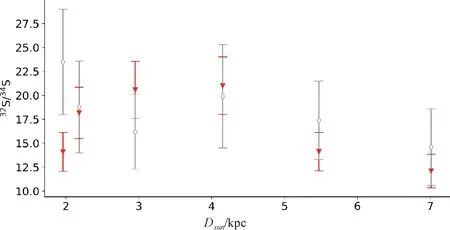
Fig.2 Our 32S/34S isotope ratios (red filled triangles) from 32SO and 34SO are plotted against the heliocentric distance
2.2.2 Sulfur fractionation
The stellar nucleosynthesis and chemical evolution can not be precisely reflected by the observed sulfur isotope ratios in the case where the ratios are significantly affected by fractionation[5]. Fractionation can happen if small differences in the zero-point energy between reactants and products of isotopically distinct species[9]. We plot the32SO/34SO ratios against theTkto investigate the possible effect of fractionation on sulfur isotopes (Fig.3). No correlations are found between sulfur isotope ratios andTk, revealing that the fractionation should be not significant for our sample. This is consistent with the fact that the fractionation normally happens at low temperature molecular clouds (<10 K, e.g., Rodgers, et al.[10]) and theTkof our sources are all larger than 20 K (Table 1).
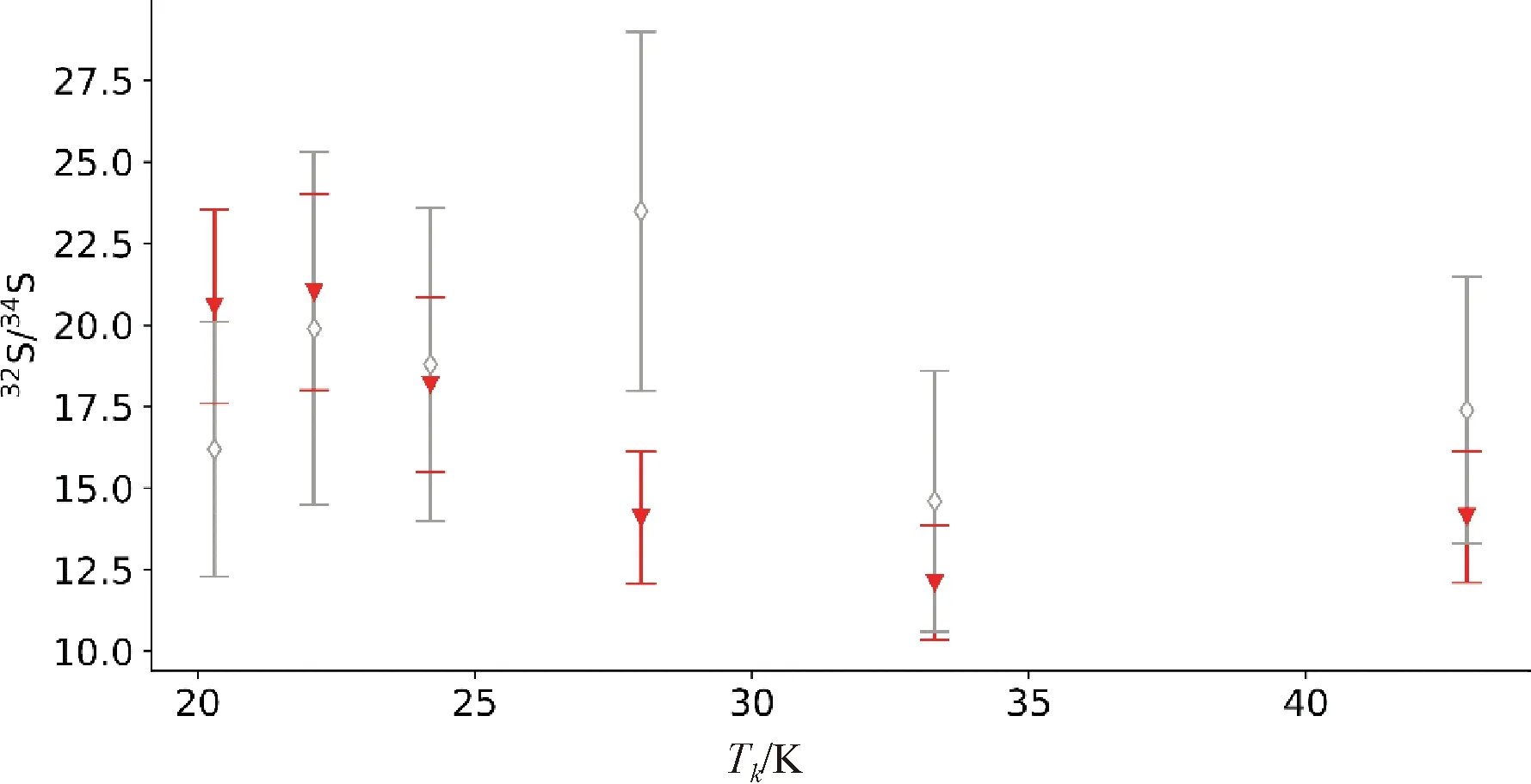
Fig.3 Our 32S/34S ratio (red filled inverted triangle) is plotted against gas kinetic temperature of our sample
2.3 A galactic interstellar 32SO/34SO gradient?
The sulfur isotope abundance ratio of32SO/34SO against the Galactocentric distance was plotted in Fig.4. One trend can be found that the32SO/34SO ratio increases with the Galactocentric distance. For comparisons, previous measurement results from CS[6]were also plotted as grey empty diamonds in Fig.4. We find that our results from32SO/34SO are consistent with the results from C32S/C34S, after taking consideration of the optical depth effect. With respect to CS,32SO may be a better tracer of the isotope ratio32S/34S in ISM, without needing the opacity corrections as CS. However, our measurements were performed for a small sample, especially lacking data from sources with large Galactocentric distance, which should bring uncertainties on the trend at the region with large distance. Future more observations on32SO and34SO toward large samples are important to obtain accurate isotope ratio32S/34S, and confirm accurately the Galactic ISM32S/34S gradient.
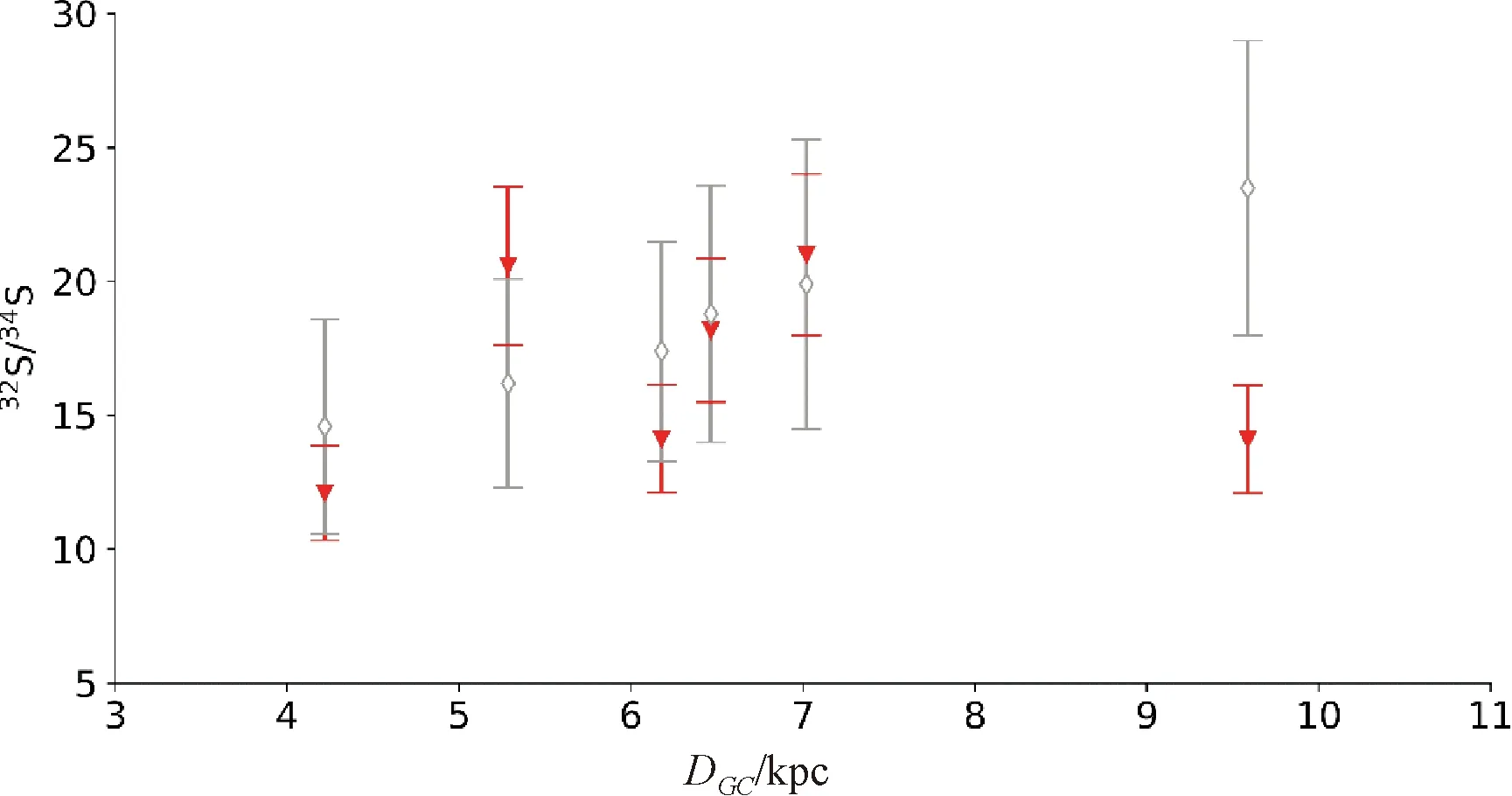
Fig.4 The 32S/34S isotope ratio is potted as a function of Galactocentric distance for our measurements
3 Summary
We present our IRAM30 observations on32SO and34SO spectra lines toward a small sample of molecular clouds with accurate distance value, which was obtained from the trigonometric measurements with high angular resolution. Based on analysis of our spectra line data, we obtain:
(1)6 sources are detected in both32SO and34SO lines and the isotope ratio32S/34S is determined from their32SO and34SO line intensities. Some possible effects on our ratios are discussed, including the observation effect, the fractionation effect etc.
(2)Comparison shows that our results of isotope ratio32S/34S from32SO are consistent with the results from C32S/C34S, after taking consideration of the optical depth effect. With respect to CS, thus32SO may be better tracer of the isotope ratio32S/34S in ISM, without needing the opacity corrections as CS. Future observations on32SO and34SO toward large samples are important to obtain accurate isotope ratio32S/34S, and confirm the Galactic ISM radial gradient of32S/34S.

